|
| |
Tachinid fly - Family
Tachinidae
- This page contains pictures and information about Tachinid
Flies that we found in the Brisbane area, Queensland, Australia.
-
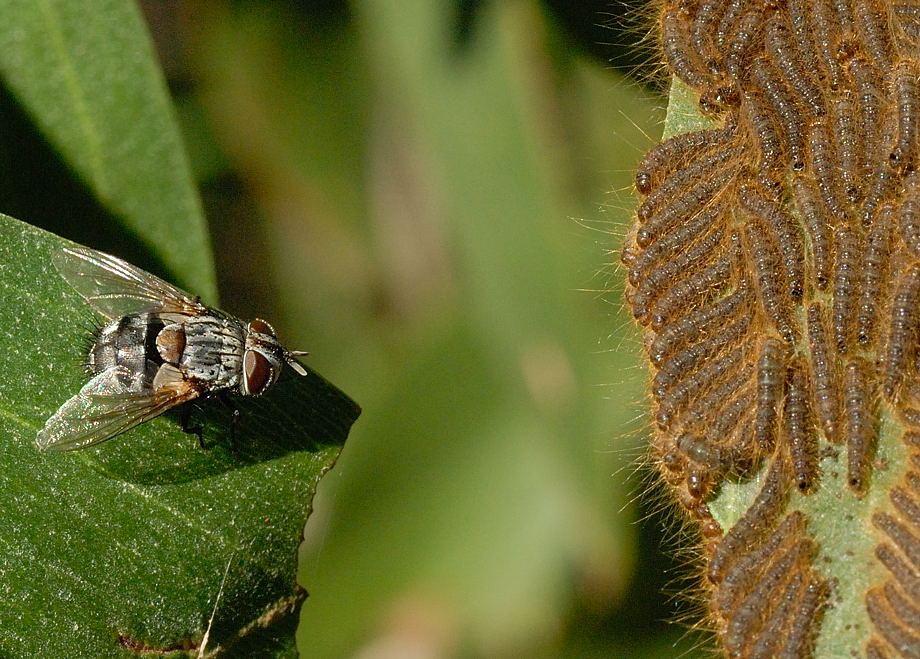 - Tachinid fly - parasites
on caterpillars and other insects
-
-
- Tachinidae is one of the largest families
in order Diptera. Tachinid flies are relatively soft bodied,
from small to large size insects. They may be drab, or brightly coloured, some
are wasp-mimicking. Tachinid flies are
extremely diverse in appearance and many do not have the typical grey-black,
bristly faces.
-
- Tachinid fly adults can be recognised
by their subscutellum swollen which is distinct below scutellum. They have large bristles conspicuous on the body.
Identification is based on the position, size and number of bristles on the body especially
on thorax. Most of them look very similar and hard to be identified.
- All Tachinid Flies share the
parasitoid habit. Their larvae are internal parasites of many orders and families of insects (and a few other arthropods).
Their host ranges are relatively broad. They
parasites on larvae of moths, larvae of
butterflies, larvae and adults of
beetles, adults of bugs, or adults of various
orthopteroid
orders, such as grasshoppers and stick insects. Depending on species, they develop either singly or in
grope and either pupate in the dead host or leave the host and pupate in soil or plant litter.
-
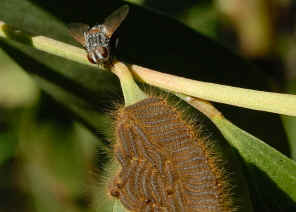
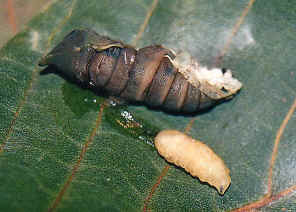 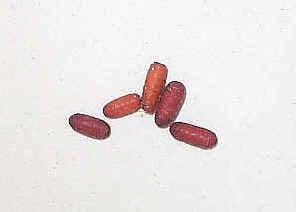
- Hunting
Mature larvae just emerge from
host
pupa
-
- Most species females lay soft eggs near or on host. Some species lay live young
instead of eggs. The newly hatched larvae have to gain entry into the host.
This is different to the parasitic Hymenoptera
which females inject eggs inside the host's body with their ovipositor. Tachinid
larvae allow their host to continue to feed and grow while they develop inside
it rather than stopping the host development in some way.
-
- The larvae are maggots, often are worm-like and lacking
appendages. They are adapted to live in their host. Adult flies can be
found in almost all habitats, either resting on foliage, feeding on flowers or, in the
case of females, flying quietly in search of hosts. Males may be seen
resting on larger tree trunks waiting for mates.
-
- For more details about the general life of Tachinid Flies, please
visit our More about Tachinid page.
-
- Four subfamilies are recognised in
Tachinidae. However, it is believed should be more than four.
-
- We found quite a number of different species of
Tachinid Flies. Most of them look very similar and hard to be identified.
However, we are quite sure they are in this family. There are four subfamilies recorded from Australia. They
are listed as follows.
-
- This subfamily parasitic in Hemiptera. Their abdomen is bare of bristles
and is either globular or quite flat and round. Most of them are
orange-brown in colours. It is believed that all species in this group are parasitoids of
Heteroptera, or true bugs.
-
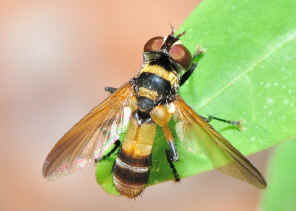
-
- Flies in Dexiinae (or Proseninae in some reference) mostly are parasitic in larval
Coleoptera (beetle) especially
Scarabaeidae. Adults
are usually found resting on tree trunk. Usually the flies have long legs.
They have well developed facial carina or sharp ridge between the antennae under eyes.
Their arista are often plumose.
-
- Rutiliini
- The Rutiliini include the largest and most handsome files. They are
usually brilliant metallic colours. Usually they have long legs with
face elongated under the eyes.
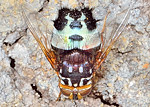
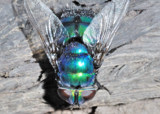

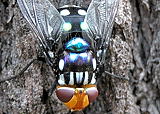
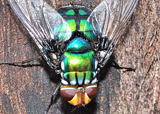
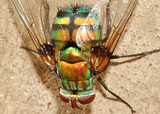
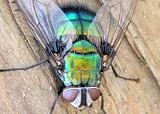
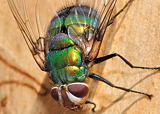
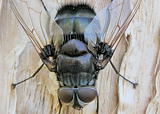
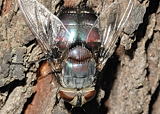
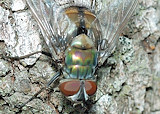
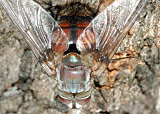
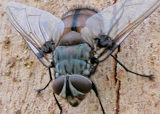 -
- Dexiini
- Flies in this group are usually found resting on tree trunk. Most of them have long legs, with
face elongated under the eyes and often with a well developed facial carina or sharp ridge between the antennae. They
are medium in size and usually drab grey to black in colours.
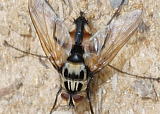
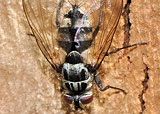
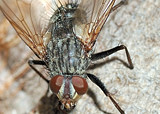
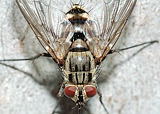 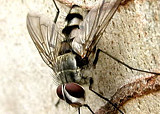 -
- The Tachininae are mostly parasitic in Lepidoptera (moth and butterfly).
Most of the are very bristly. They have more than one supra-alar bristle and prosternum
is bare. Flies in Tachininae are more diverse and include some of the largest, most colorful, and most bristly of tachinids.
This subfamily also includes some of the smallest and least conspicuous tachinids.
-
-
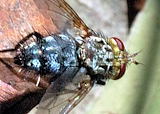
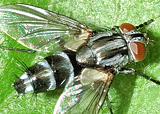 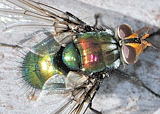
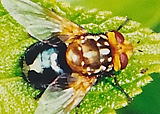
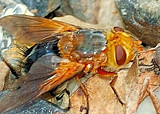
-
- The subfamily Goniinae (or Exoristinae in some reference) are mostly parasitic in
Lepidoptera (moth and butterfly). They
have more than one supra-alar bristle and prosternum is not bare. In
this group most species are grayish black in color and moderately bristly.
They are from medium to small in size.
They looked very similar and hard to be distinguished.
-
-
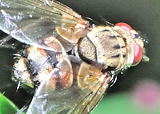
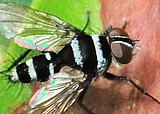
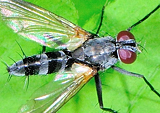
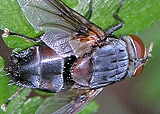
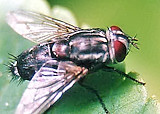
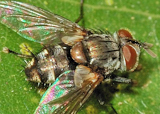
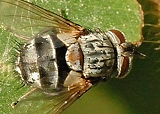
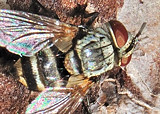
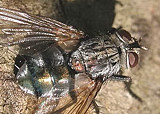 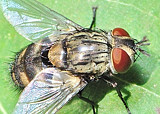
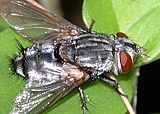 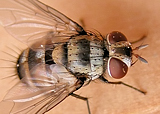
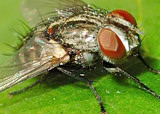
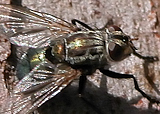
-
- Please send email
to us if you know the ID of those Tachinid Flies.
-
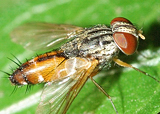
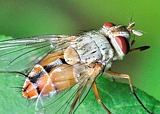
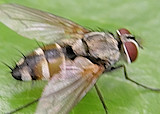
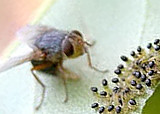 -
- Reference:
- 1. Insects
of Australia, CSIRO, Division of Entomology, Melbourne University
Press, 2nd Edition 1991, p 784.
- 2. Insects of Australia and New Zealand - R. J. Tillyard, Angus
& Robertson, Ltd, Sydney, 1926, p376.
- 3. Family
Tachinidae - Tachinid Flies - BugGuide.net, 2007.
- 4. Family
TACHINIDAE - Australasian/Oceanian Diptera Catalog -- Web Version, by Bryan K. Cantrell & Roger W.
Crosskey.
- 5.
On the
Fly, The Interactive Atlas and Key to Australian Fly Families CD Rom
- Hamilton, J. et al. 2006. Brisbane : CBIT & ABRS.
- 6. Northern
Territory Insects, A Comprehensive Guide CD - Graham Brown, 2009.
- 7. Family TACHINIDAE - Australian Biological Resources Study, Australian Faunal Directory.
- 8. Homepage for Tachinidae Resources - by James E. O'Hara, Invertebrate Biodiversity, Agriculture and Agri-Food Canada.
- 9. TACHINIDAE: Evolution, Behavior, and Ecology - John O. Stireman, James E. O'Hara and D. Monty Wood, Annu. Rev. Entomol. 2006. 51:525–55.
- 10. A conspectus of the Tachinidae (Diptera) of Australia, including keys to the supraspecific taxa and taxonomic and host catalogues -
R.W. Crosskey, 1973, British Museum (Natural History), Bulletin Entomology Supplement 21.
- 11. A revisionary classification of the Rutiliini (Diptera: Tachinidae), : with keys to the described species - R.W. Crosskey, 1973, British Museum (Natural History), Bulletin Entomology Supplement
19.
-
- Back to Top
-
- [ Phasiinae ] [ Dexiinae ] [ Tachininae ] [ Goniinae ] [ Unknown Tachinid fly ] [ More about Tachinid flies ]
| |
|














































